Attending the working session were Politburo members: Le Minh Hung, Secretary of the Party Central Committee, Head of the Party Central Committee's Organization Commission; Nguyen Duy Ngoc, Secretary of the Party Central Committee, Chairman of the Party Central Committee's Inspection Commission; Nguyen Hoa Binh, Permanent Deputy Prime Minister; General Phan Van Giang, Minister of National Defense; General Luong Tam Quang, Minister of Public Security; Secretary of the Party Central Committee, Chief of the Party Central Committee's Office Le Hoai Trung; Party Central Committee members, leaders of central ministries, departments and branches, and leaders of Lam Dong, Binh Thuan and Dak Nong provinces.
General Secretary To Lam speaks at a working session with the Standing Committee of Lam Dong Provincial Party Committee, the Standing Committee of Binh Thuan Provincial Party Committee and the Standing Committee of Dak Nong Provincial Party Committee.
Create a space for interconnected development
Lam Dong - Dak Nong - Binh Thuan are heroic lands, resilient in the resistance war, diligent in labor, creative in innovation. Each locality has its own identity, outstanding strengths, contributing to creating a rich, multi-dimensional and potential development space.
All three provinces have actively and seriously implemented the Central Government's major policy on reorganizing provincial-level administrative units, streamlining the organizational apparatus, and preparing for Party congresses at all levels for the 2025-2030 term. Projects to merge provincial levels, not organize district levels, and build two-level local governments have been seriously implemented and systematically developed, closely following the Central Government's direction and in accordance with the reality of each locality. Party building and rectification work has been comprehensively promoted; Party inspection, supervision, and discipline have been strictly implemented, with no forbidden areas. Mass mobilization, ethnic and religious work, and administrative reform have continued to be innovated and promoted effectively; people's trust in the Party, the State, and the political system has been constantly consolidated, creating a solid foundation for new developments.
In recent years, the three provinces of Lam Dong, Dak Nong and Binh Thuan have all achieved many positive results in the fields of economy, society, national defense, security, Party building and political system. GRDP growth rate has been maintained at a fairly high level: Binh Thuan reached 7.25% in 2024, Lam Dong averaged 7.01%/year in the period 2021-2025, while Dak Nong recorded strong improvements in growth indexes, budget revenue and investment attraction. Localities have focused on comprehensive human development, preserving and promoting traditional cultural values of ethnic groups. The material and spiritual life of the people has been constantly improved. The political situation and social order and safety in all three provinces have been maintained.
The General Secretary requested that Lam Dong province urgently rebuild the master plan for socio-economic development in the new period.
After listening to the report and opinions exchanged at the working session, in his concluding remarks, General Secretary To Lam emphasized that the policy of merging three provinces to form Lam Dong province (new) aims to improve the effectiveness and efficiency of governance, management, and reorganize the development space in the direction of expansion, connection, sustainability, promoting advantages according to scale and optimizing resources. When merged, the three provinces will form a stronger economic-administrative entity, with the largest area in the country, significantly increased public investment, capable of proposing special mechanisms, attracting strategic resources and leading regional development.
The General Secretary pointed out that Lam Dong is a center of high-tech agriculture, Dak Nong has strengths in minerals and land for industrial development, Binh Thuan plays a key role in connecting to the sea with advantages in renewable energy and coastal logistics. The connection between the highlands - midlands - coastal areas helps to form an inter-industry value chain, a chain of linked urban areas, unique eco-tourism, resort and cultural areas, creating a more connected, effective and sustainable development space.
The merger is an opportunity to comprehensively restructure the regional development model, redistribute population, infrastructure, and investment resources according to new strategic directions, contributing to the successful implementation of rapid and sustainable development goals in the new development era.
General Secretary To Lam gave a directive speech
Connecting three ecological regions: plateau - midland - coast
After the merger, the General Secretary suggested that Lam Dong province urgently rebuild the master plan for socio-economic development in the new period, based on an open space structure, connecting three ecological regions: plateau - midland - coastal, creating a unified, synchronous development entity with strong spreading ability. In particular, urban centers, industrial parks, agriculture and services, seaport systems, airports, logistics, digital infrastructure and ecological corridors must be integrated, operated intelligently and closely linked; it is necessary to form an East-West strategic development axis connecting the Central Highlands, coastal areas...
Delegates attending the working session
The General Secretary pointed out that the great advantages of the new Lam Dong province in terms of diversified economic structure, abundant mineral and wind resources, solar energy, leading agricultural products in the country, and a unique tourism ecosystem from the highlands to the sea, will be the foundation for developing a green economic model - circular economy - digital economy - knowledge economy. The province must develop rapidly but sustainably, must be steadfast in the green development orientation, in which the Central Highlands headwater forests, La Nga river basin, Cai river, Luy river and Binh Thuan sea need to be strictly protected as ecological shields for the entire South Central and Southeast regions; need a strategy with enough vision and capacity to lead development not only for the locality, but also contribute to shaping the development space of the Central Highlands - Central Highlands region in the coming decades.
The province needs to synchronously deploy strategic breakthroughs associated with regional development practices and the spirit of the Central's major resolutions. These must be synchronous, consistent and mutually complementary, becoming the driving force leading all aspects of development, from institutions to infrastructure, from businesses to people.
Delegates attending the working session
Emphasizing that people are the center and subject of all strategies, the General Secretary suggested that it is necessary to arouse the spirit of self-reliance, self-improvement, and the aspiration to become rich legitimately among the people; make comprehensive investments in culture, education, health care, and develop high-quality human resources for high-tech agriculture, green industry, logistics, and digital transformation. At the same time, Lam Dong province will preserve and promote the unique cultural values of ethnic minorities, and build an environment that encourages creativity, learning, and entrepreneurship throughout society.
The General Secretary noted that maintaining national defense and security and creating broad social consensus are the foundation for success in the entire unification and development process. Localities must not allow management gaps, social hot spots or reduced operational effectiveness. The authorities need to regularly grasp the situation at the grassroots level, proactively detect and promptly handle acts of taking advantage of, inciting and distorting the Party's unification policy and the State's policies; it is necessary to make people understand that unification is not about eliminating but expanding development space, but about multiplying opportunities and promoting potential for a common future and a better life for each person.
To successfully organize Party Congresses at all levels, the General Secretary requested to ensure a steady transition in thinking, organization and staff in the new development space. The preparation of congress documents must reflect a new vision, new aspirations and new missions; must look straight at the truth, clearly point out the bottlenecks and knots in the old development model, and at the same time arouse new potentials opening up in the context of integration and digital transformation.
The General Secretary emphasized that the Party Committee's personnel must be connected and closely linked with the leadership personnel of elected and administrative agencies at all levels, ensuring continuity, stability and smooth operation of the apparatus immediately after the establishment of the new province; focusing on restructuring and improving the quality of the staff, civil servants and public employees. The training and fostering of staff in the transitional period must be carried out urgently, systematically, and closely related to the characteristics of the newly merged locality. Party Committees and authorities at all levels fully realize that this Party Congress at all levels is not only an organizational transition, but also a transition in leadership thinking, governance models and methods of action appropriate to a new, larger, more complex and more opportunistic administrative entity.
Regarding the recommendations and proposals of the three provinces, the General Secretary acknowledged and assigned the Central Party Office to synthesize and send them to relevant agencies for research and urgent consideration to resolve them within their authority, ensuring compliance with legal regulations and in the spirit of maximum support for the localities.
VNA
Source: https://baochinhphu.vn/tong-bi-thu-to-lam-tinh-lam-dong-moi-khan-truong-xay-dung-lai-quy-hoach-tong-the-phat-trien-kinh-te-xa-hoi-giai-doan-moi-102250609142638548.htm


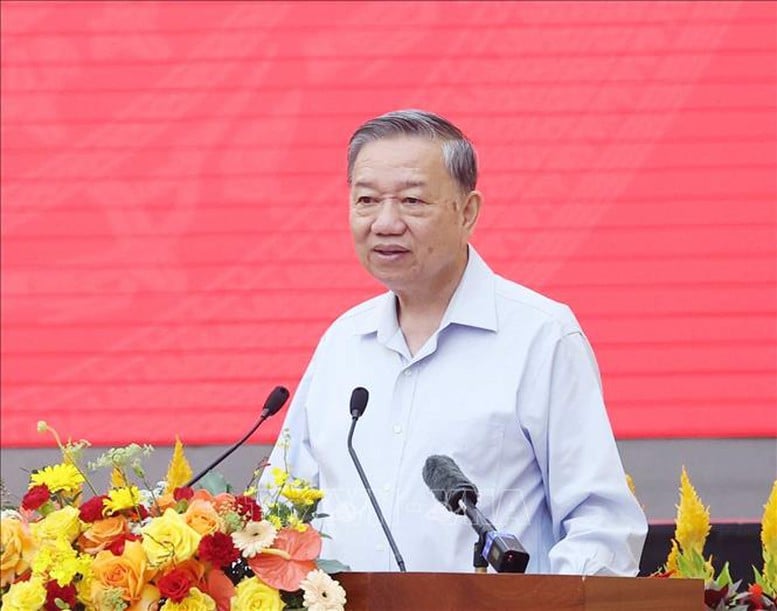
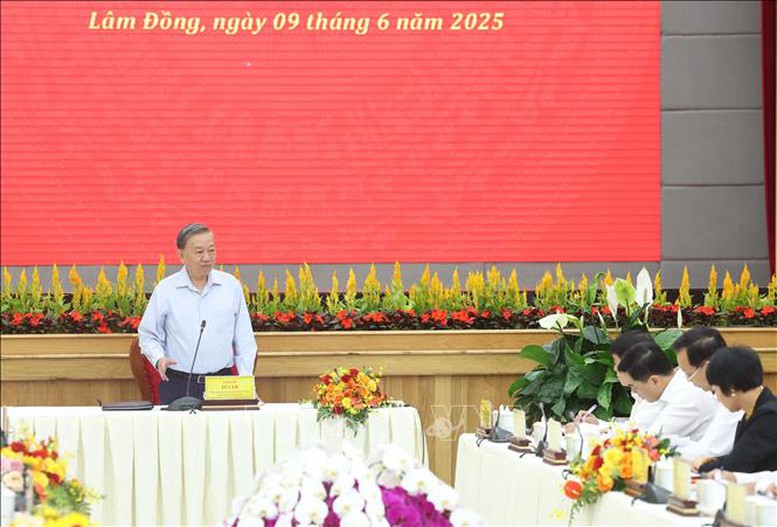
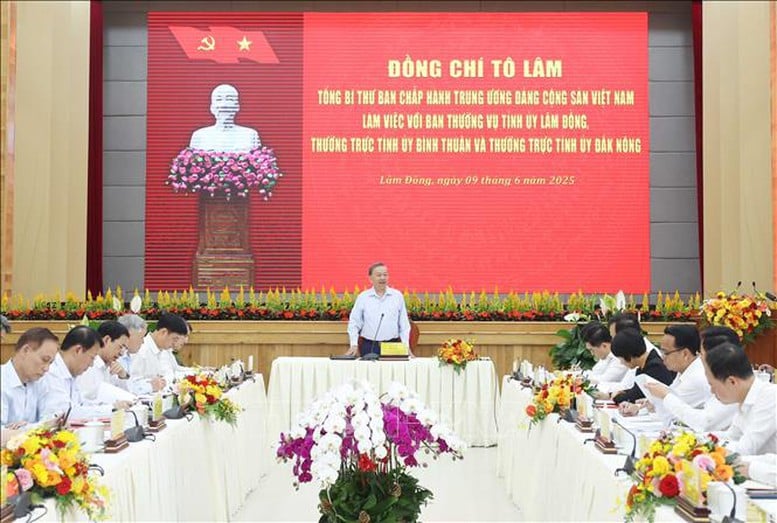
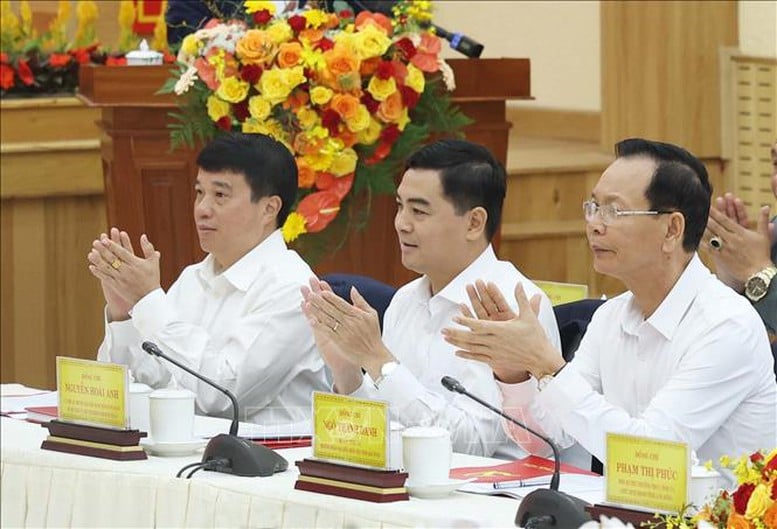




![[Photo] Chu Noodles - the essence of rice and sunshine](https://vphoto.vietnam.vn/thumb/1200x675/vietnam/resource/IMAGE/2025/11/11/1762846220477_ndo_tl_7-jpg.webp)
![[Photo] Prime Minister Pham Minh Chinh receives Lao Minister of Labor and Welfare Phosay Sayasone](https://vphoto.vietnam.vn/thumb/1200x675/vietnam/resource/IMAGE/2025/11/11/1762872028311_dsc-2246-jpg.webp)

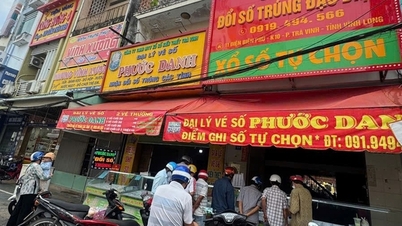

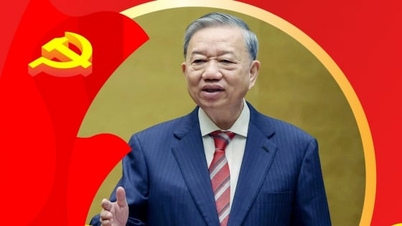

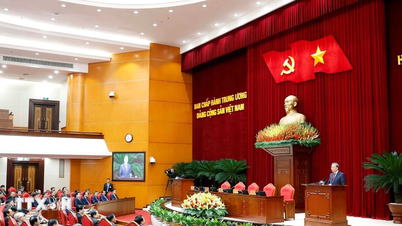





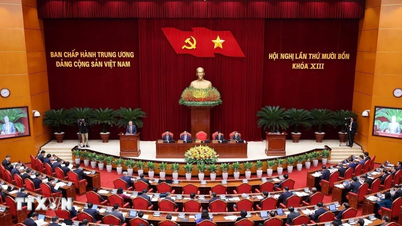



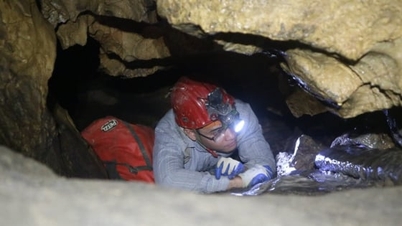
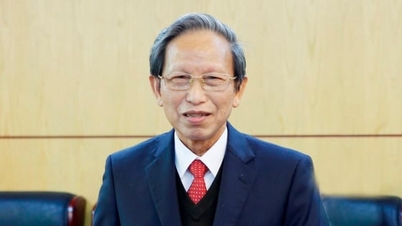










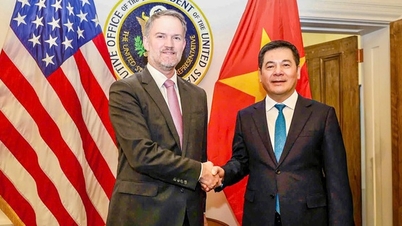














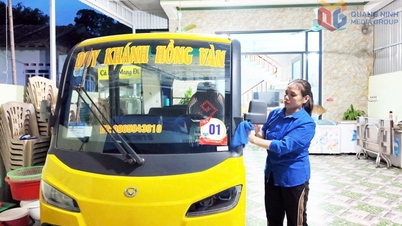



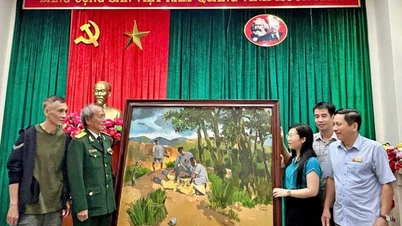

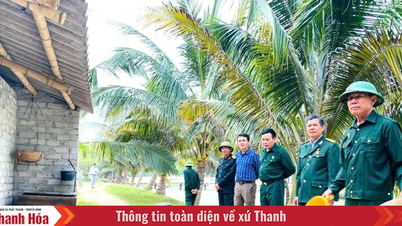








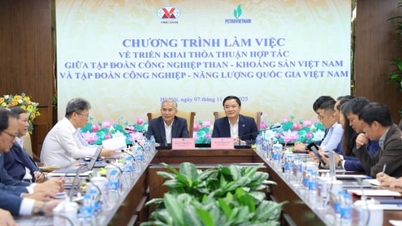






















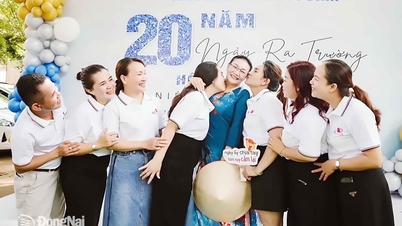

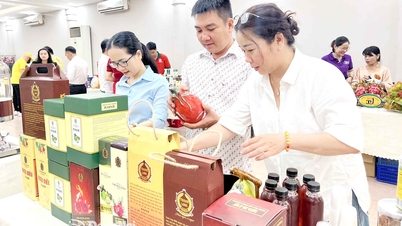
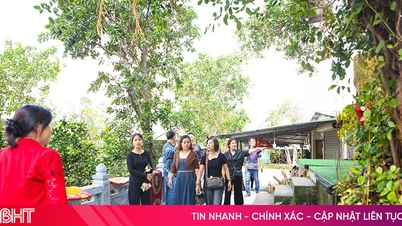



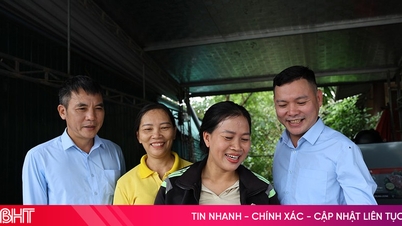





![Dong Nai OCOP transition: [Article 3] Linking tourism with OCOP product consumption](https://vphoto.vietnam.vn/thumb/402x226/vietnam/resource/IMAGE/2025/11/10/1762739199309_1324-2740-7_n-162543_981.jpeg)








Comment (0)